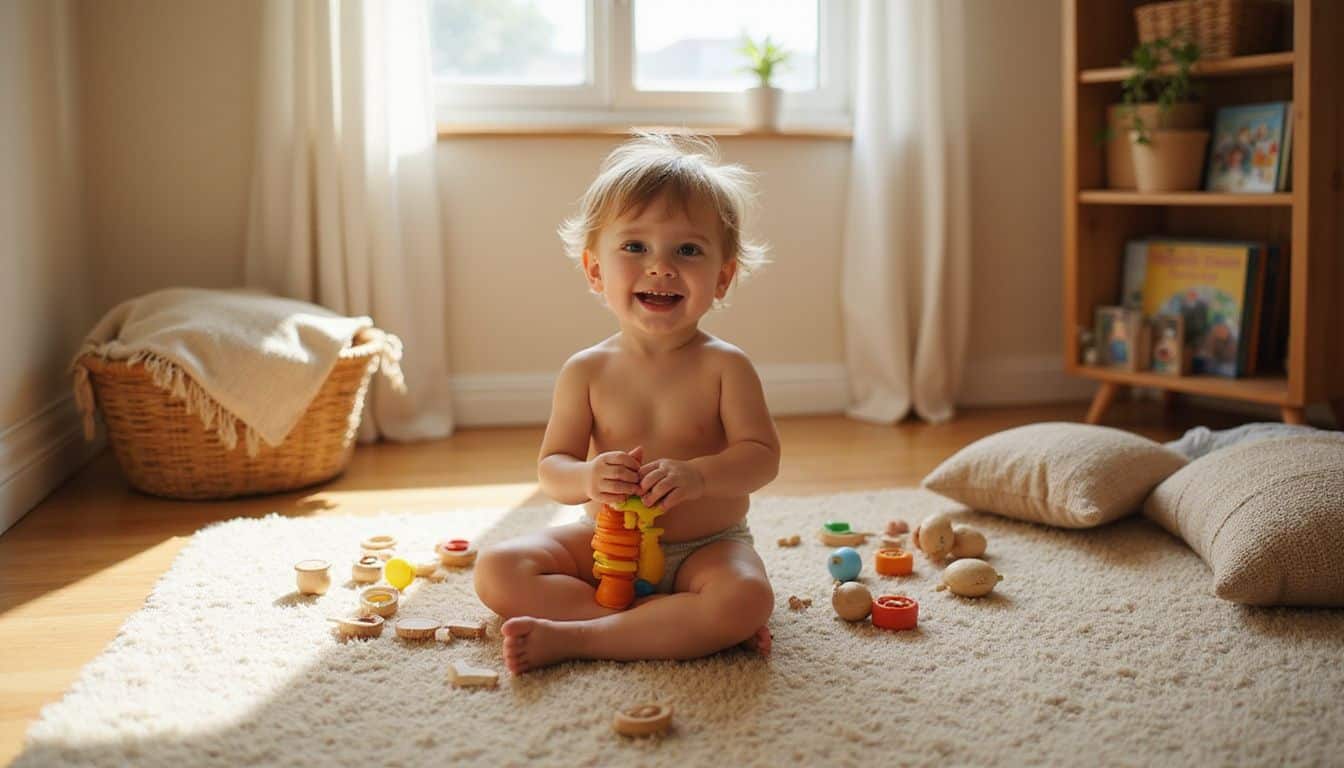Worried about bumps, bruises, and those dreaded “uh-oh” moments at home? A surprising fact is that falls are the top reason young kids end up in the emergency room. Our guide on how to make a home safer for kids offers you six simple tips to stop accidents before they start.
Keep reading to learn easy ways to keep your little ones safe!
Key Takeaways
Falls cause more emergency room visits for kids than anything else—so put safety gates at stairways, and lay slip-resistant mats in bathrooms to avoid dangerous tumbles.
Curious little ones can quickly find dangers around the home, so lock away medications, chemicals, and cleaning products in secure cabinets.
Brackets help anchor heavy furniture firmly to walls—kids love climbing dressers or shelves, and furniture tipping over can lead to severe injuries.
Kids can drown quickly in even two inches of water; stay close by whenever they’re near bathtubs, toilets, buckets, or pools.
Place smoke alarms on each level of your home, store fire extinguishers within easy reach, and show your children how to dial 911 if there’s an emergency.
Table of Contents
Childproofing Essentials
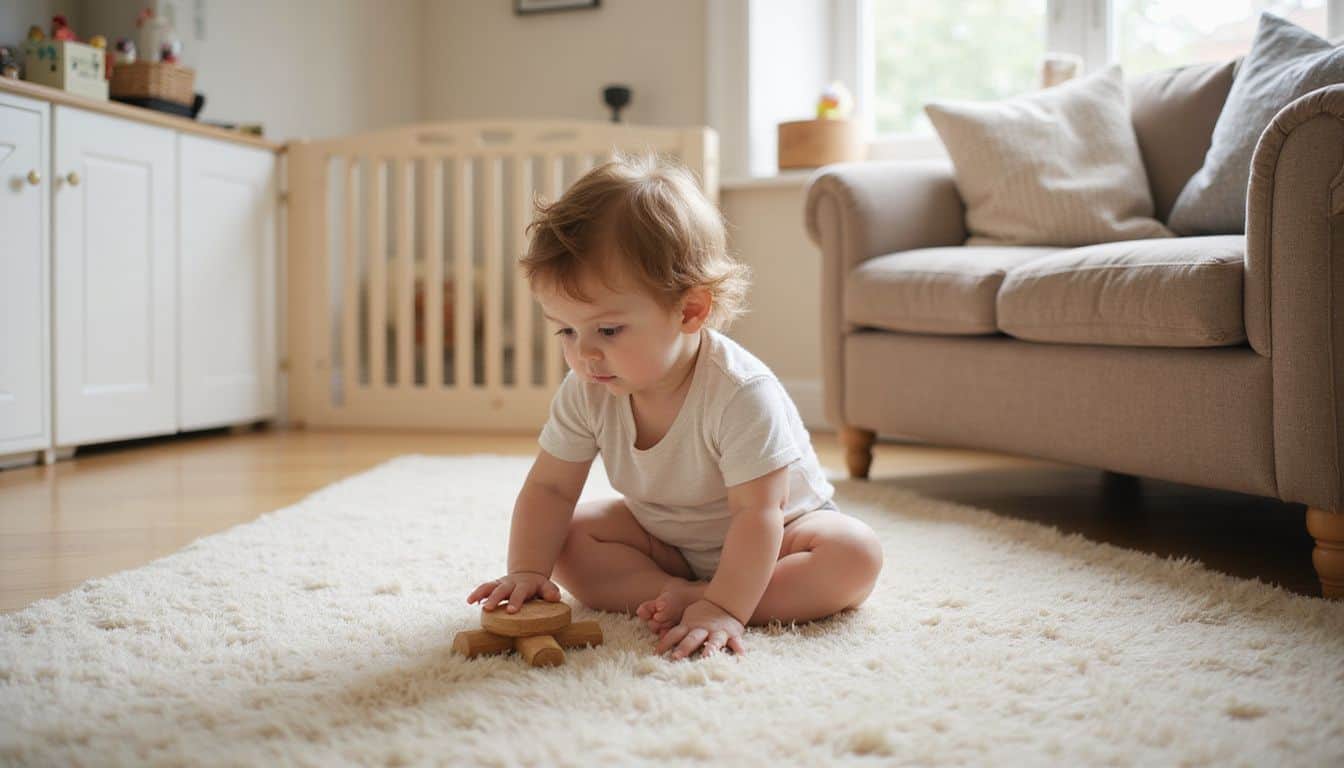
Your home has many hidden dangers for little ones. Safety tools like cabinet locks and outlet plugs form the first line of defense against curious hands.
Install safety latches on cabinets and drawers
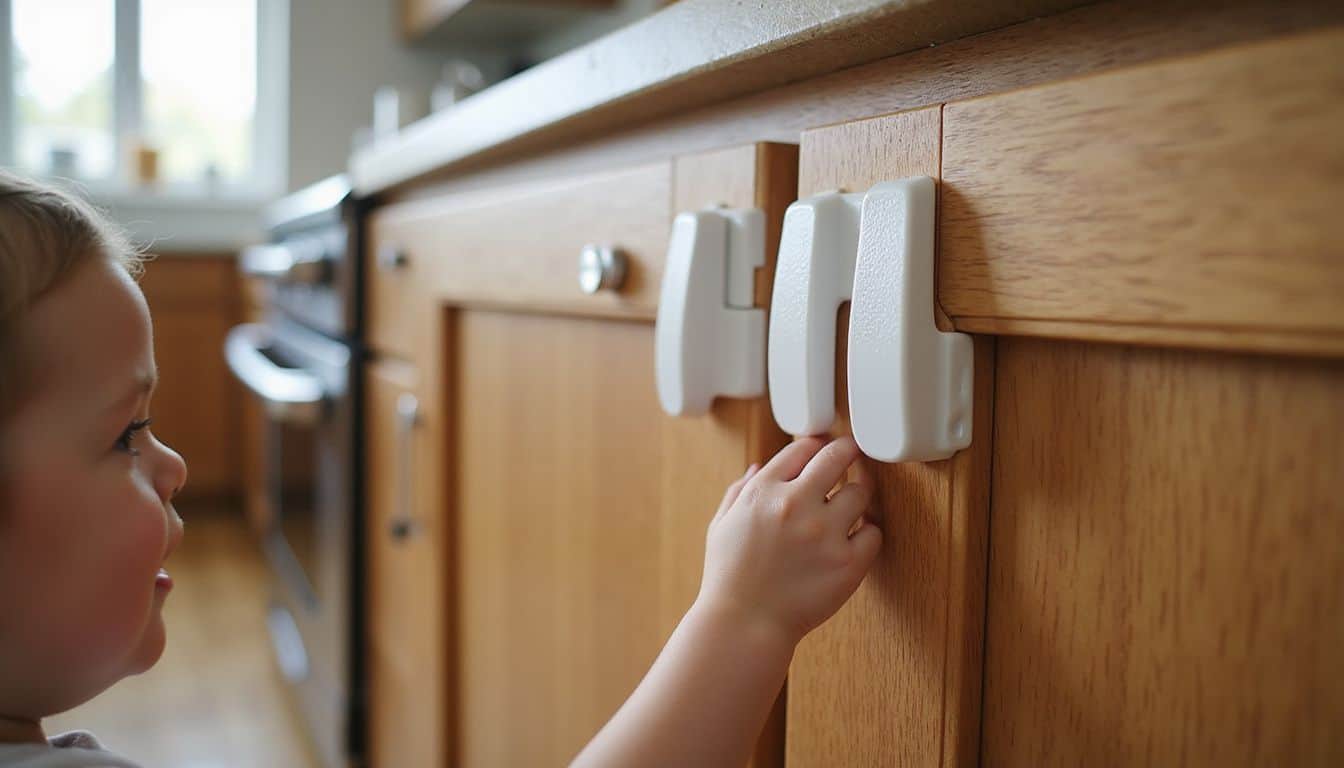
Cabinet locks help keep curious little fingers away from harmful household items. A pack of 14 Safety 1st Wide Grip Latches costs just $8, making child safety affordable and simple.
Each latch restricts cabinet openings to around 1.5 inches—enough to keep cleaning chemicals and sharp objects safely out of reach. Most parents find installation easy, first placing the latch using the included double-sided tape, then adding screws for lasting security.
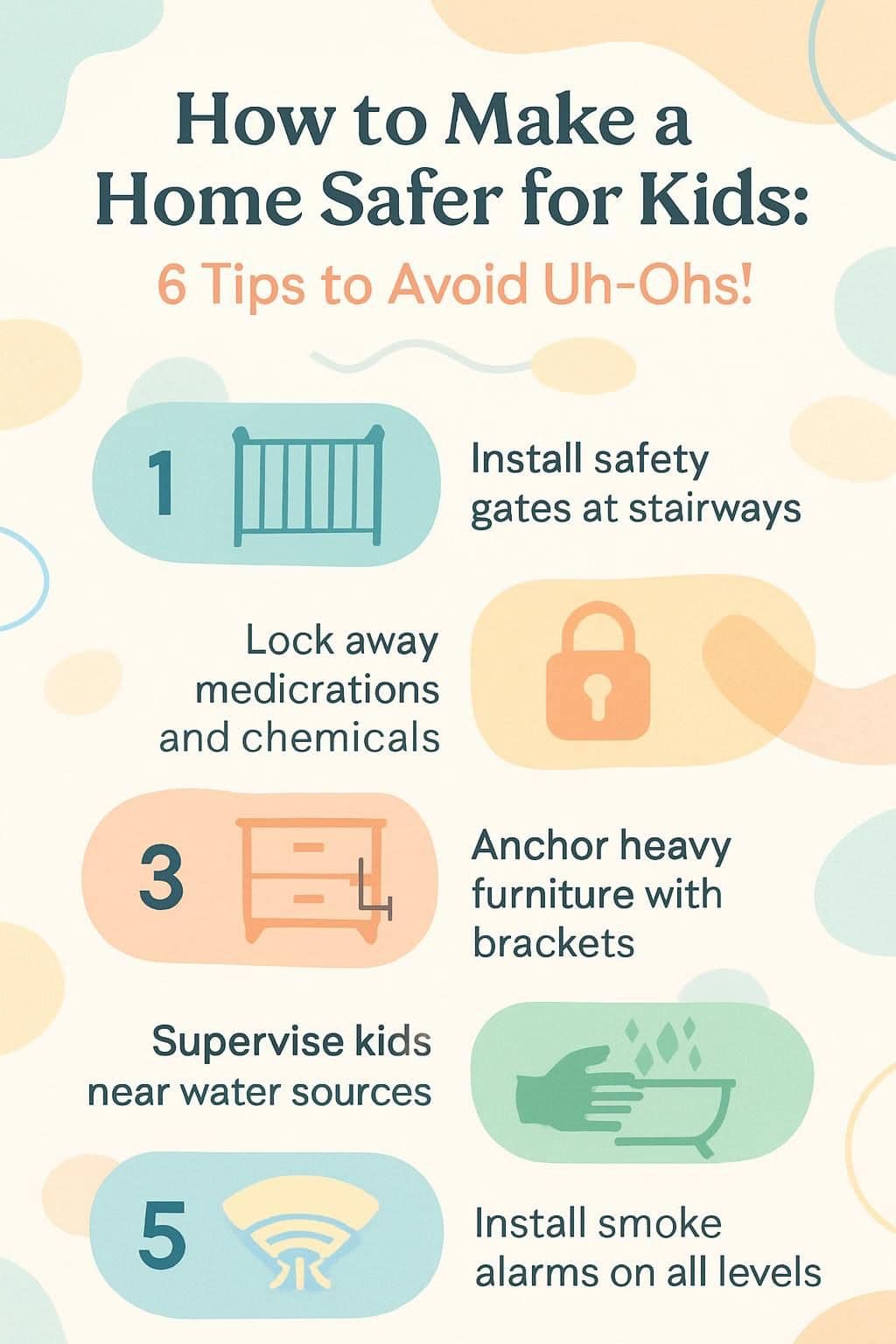
Experienced parents know kitchen and bathroom cabinets need extra care for safety. A dual-lock design works well on most standard cabinets and drawers around the home. Locked storage prevents young children from getting into medicines, cleaners, and sharp tools that could hurt them.
Next, outlet covers and cord organizers offer even more ways to keep adventurous little ones safe from electrical hazards.
Use outlet covers and cord organizers
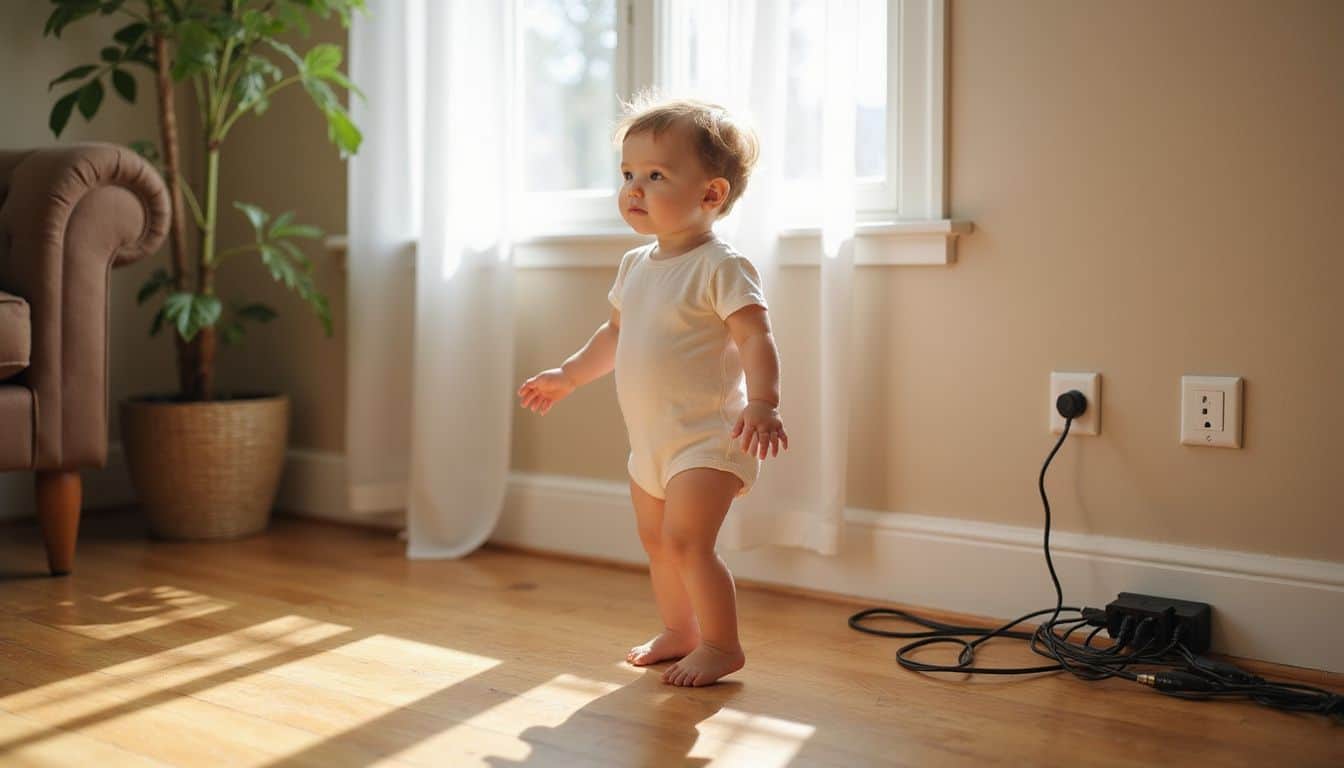
Electric outlets are serious hazards for curious little kids. I learned this the hard way—my toddler once tried pushing a hairpin straight into an outlet! Safety caps can prevent this danger by covering those tempting little holes.
Tamper-resistant outlets are even more effective, using internal shutters to block small objects. These simple solutions protect your child from harmful shocks, giving parents much-needed peace of mind.
Proper cord management is equally important for electrical safety at home. Loose and hanging cords tempt kids to grab them, creating risks of tripping or injury. In our house, we use cord clips to keep charging cables off the ground, safely away from tiny hands.
For longer wires, we place cord covers along walls or beneath furniture, hiding cords neatly out of sight. The American Academy of Pediatrics recommends keeping electrical cords completely out of children’s reach—they can cause strangulation or electrical shock.
Managing cords smartly helps keep your family safe and makes your home look tidy too!
Secure furniture and appliances to walls
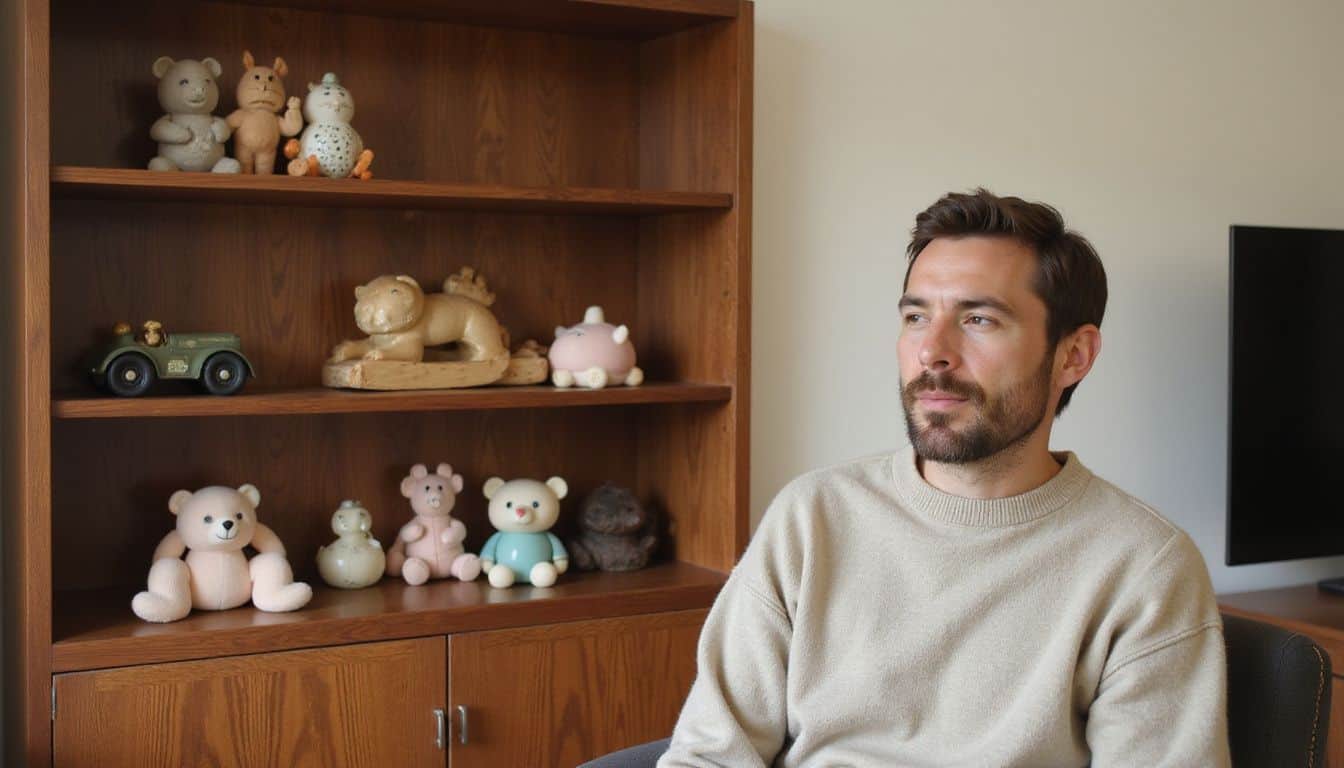
Heavy furniture can be a serious hazard for young kids. Little ones love to explore and climb, but shelves, dressers, and TV stands can easily tip over on them. I learned this firsthand after my toddler nearly toppled our bookcase, reaching for a brightly-colored toy.
Now, I always anchor tall furniture securely to walls using simple brackets sold at any hardware store. These devices take just minutes to install—and can keep your child safe for years.
Try to avoid placing toys, remote controls, or attractive objects on high surfaces. Kids naturally want those items and often pull themselves up, risking furniture falling onto them.
Also, mount flat-screen TVs safely onto walls, rather than using standard stands. If you have an older, heavier model TV, use a sturdy stand designed specifically to carry its weight safely.
These small, easy steps help keep your home safe, so children can freely enjoy playing without danger.
Preventing Falls
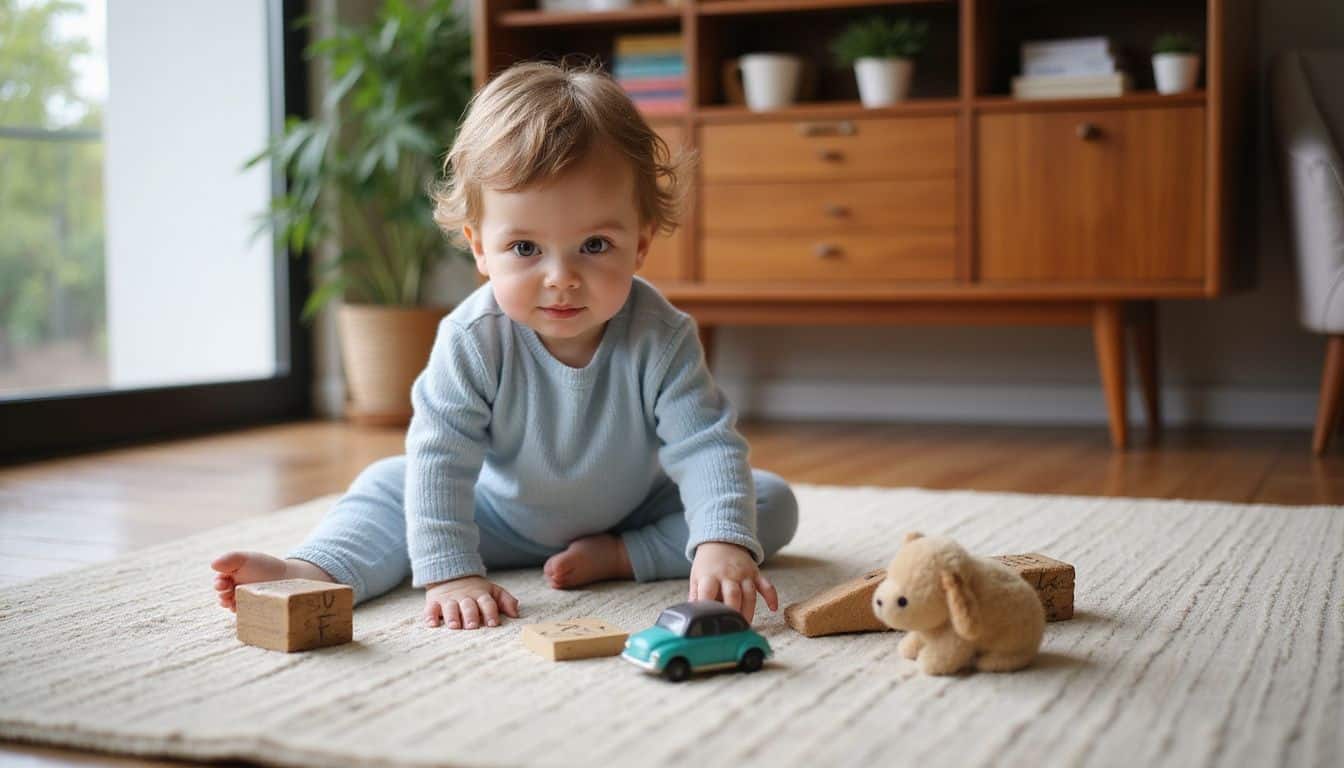
Falls can cause major injuries to kids, so safety steps make a big difference. Secure rugs with non-slip pads and keep floors clear of toys to stop trips and slips.
Use safety gates for stairs
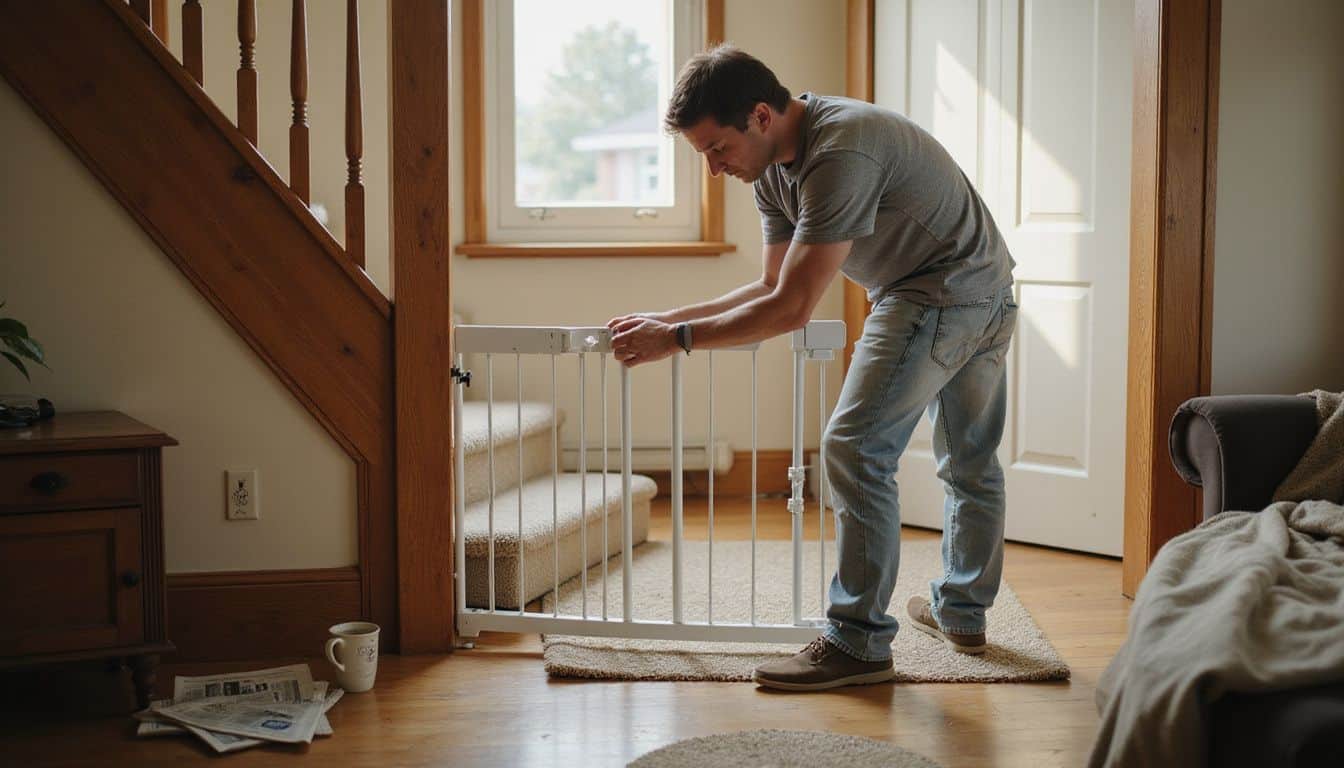
Stairs can be risky for young kids—each year, nearly 100,000 children end up injured from falling down stairs. Safety gates are vital because they provide a strong barrier that keeps curious toddlers safe and prevents serious tumbles.
For the top of your staircase, use a hardware-mounted gate; pressure-mounted gates can tip over if kids lean against them. Also, the gate should swing toward the landing, away from the stairs, just in case it unexpectedly opens.
Avoid those folding, accordion-style gates—they have spaces where little fingers or even small heads can get trapped. Choose a gate with a latch that’s easy for grown-ups to operate but too tricky for young kids to figure out.
With the right safety gate installed, you’ll stay calm and confident as your child begins exploring around the house. It’s smart to put gates at both ends of the stairs. Keep these gates in place until your toddler can safely use stairs by themselves, typically around age two.
Add non-slip mats to bathrooms and play areas
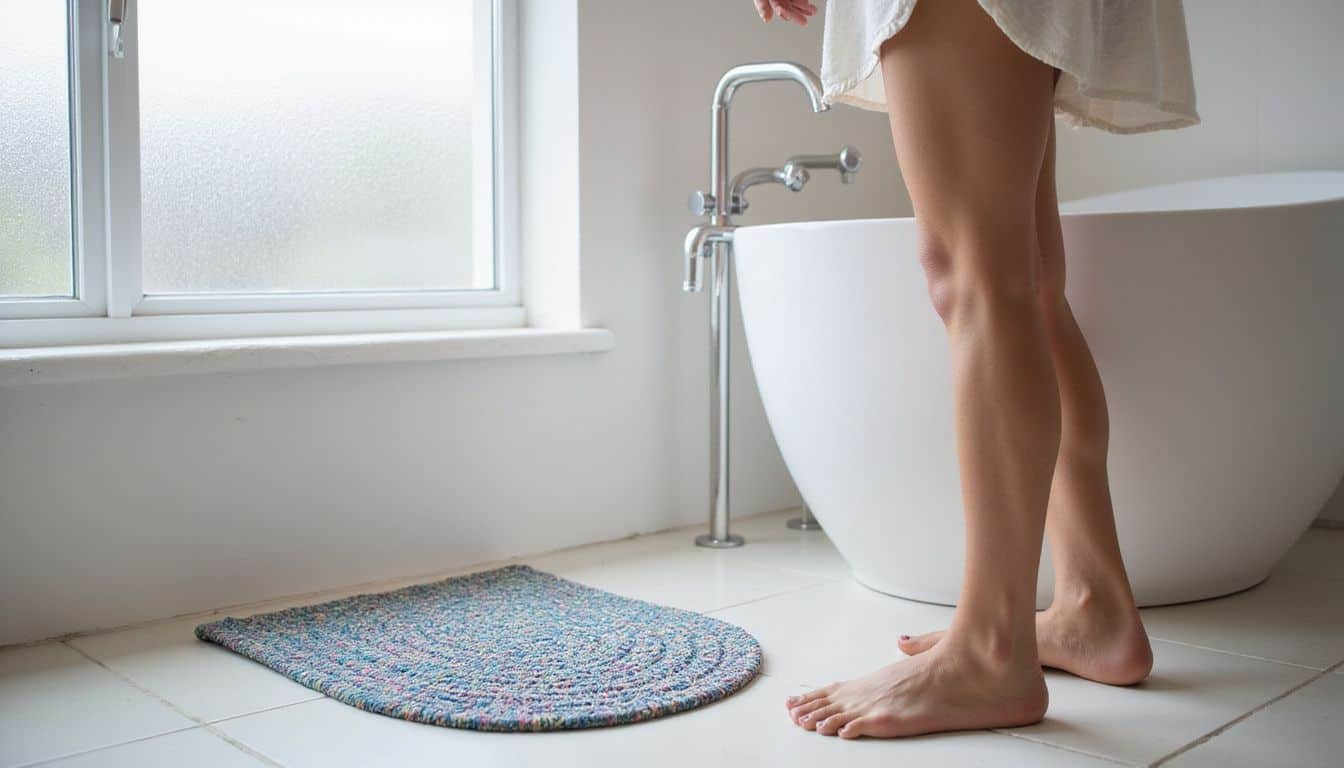
Slippery floors at home often lead to child injuries—but non-slip bathroom mats can solve this problem easily. Place textured mats on bathroom floors and inside your bathtub to stop slips before they occur.
My kids used to skid around our smooth tile flooring, so I put down mats near the toilet and sink for extra grip. For even more safety, always pick bathroom rugs with sturdy, non-skid backing, so they grip the floor securely.
Anti-slip grab bars near the bathtub and toilet can also help children—and adults too—stay steady in slippery spots. These simple additions go a long way toward safer bathrooms.
Kids quickly cause spills, making floors slippery and dangerous. It’s important to wipe wet areas fast, especially in bathrooms and play spaces. Bright, colorful mats are a great choice for play areas—they offer secure footing, cushion falls, and clearly mark spaces where your kids can safely play.
I’ve used vibrant mats in our home, and they’ve really helped reduce slips and bumps during playtime. Sometimes certain areas need extra grip. You can always find the best adhesive anti-slip tape for your needs to secure loose mats or create safer walking paths on slick floors.
Fire and Burn Safety
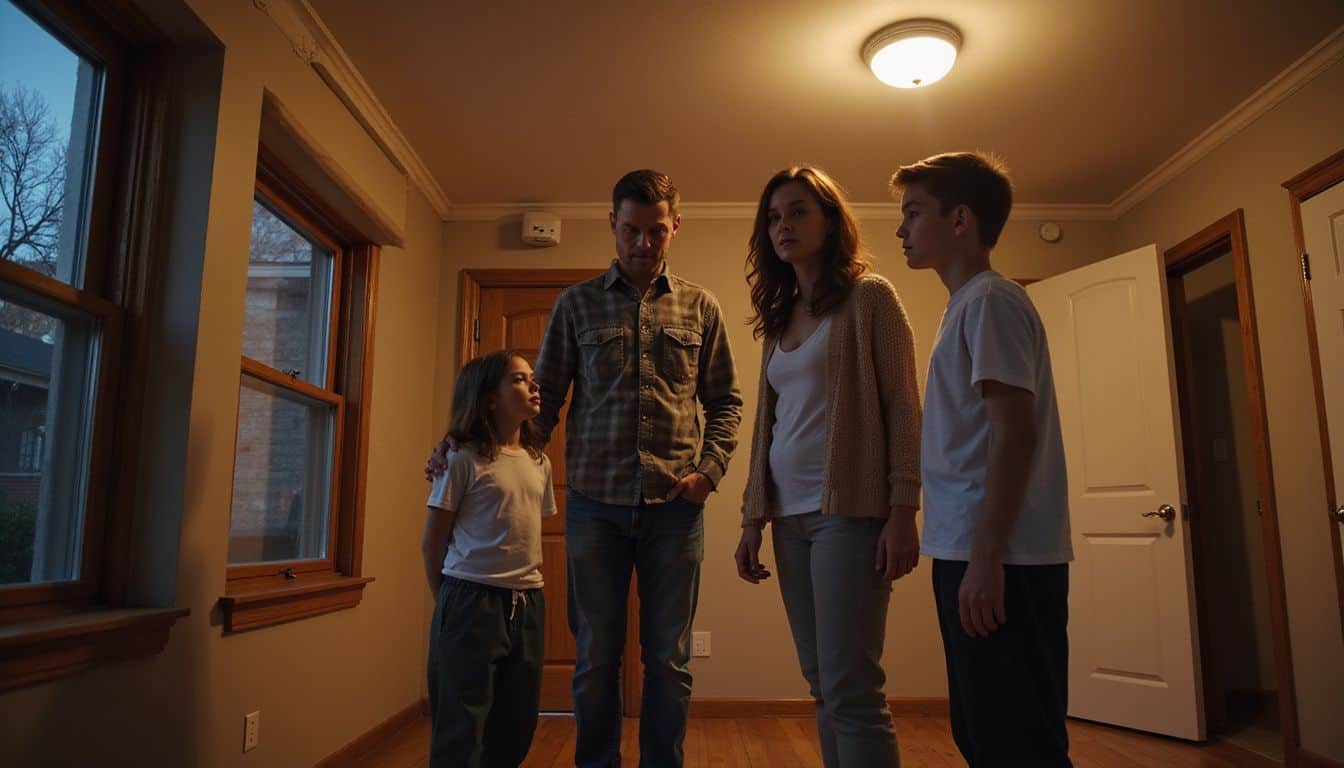
Fire can spread through your home in less than three minutes. You need smoke alarms on every floor and a clear exit plan that your kids know by heart.
Install smoke detectors and fire extinguishers
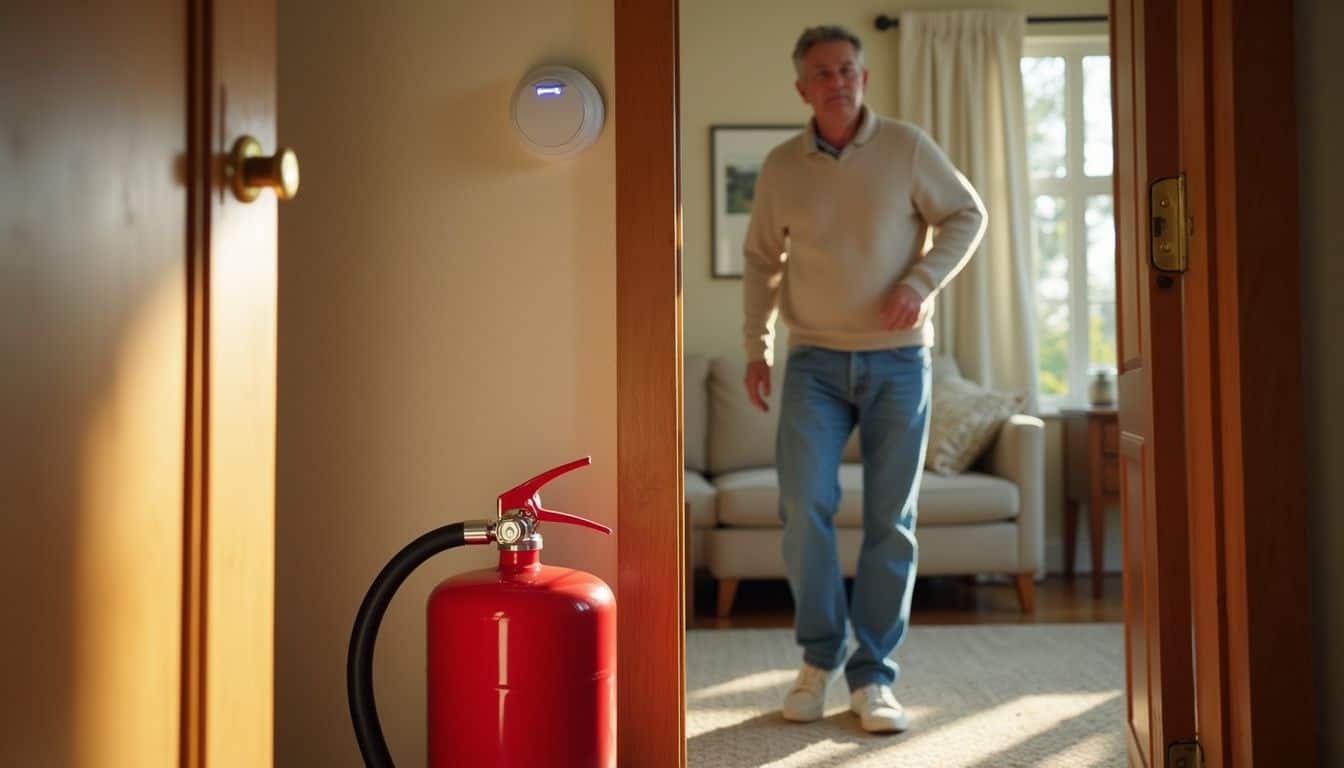
Smoke detectors protect your family by providing early warnings, giving everyone crucial time to escape. Install them on every floor and just outside each bedroom, so you’ll always hear the alarm clearly.
About half of home fire deaths occur during sleep hours—working smoke alarms help make sure your family wakes up before danger spreads too far. Regularly test your detectors once a month, and replace them every 10 years to keep them reliable.
A working smoke alarm cuts the risk of dying in a home fire by half.
Always keep a multipurpose dry chemical fire extinguisher close to an exit and easy to see. Placing it near the exit helps you manage small fires without risking your escape path. Show your family exactly how to use it correctly—remember to aim at the base of the flames, not into the smoke.
Simple precautions like these help defend your home and loved ones against fires that could quickly grow dangerous.
Keep hot appliances and liquids out of reach
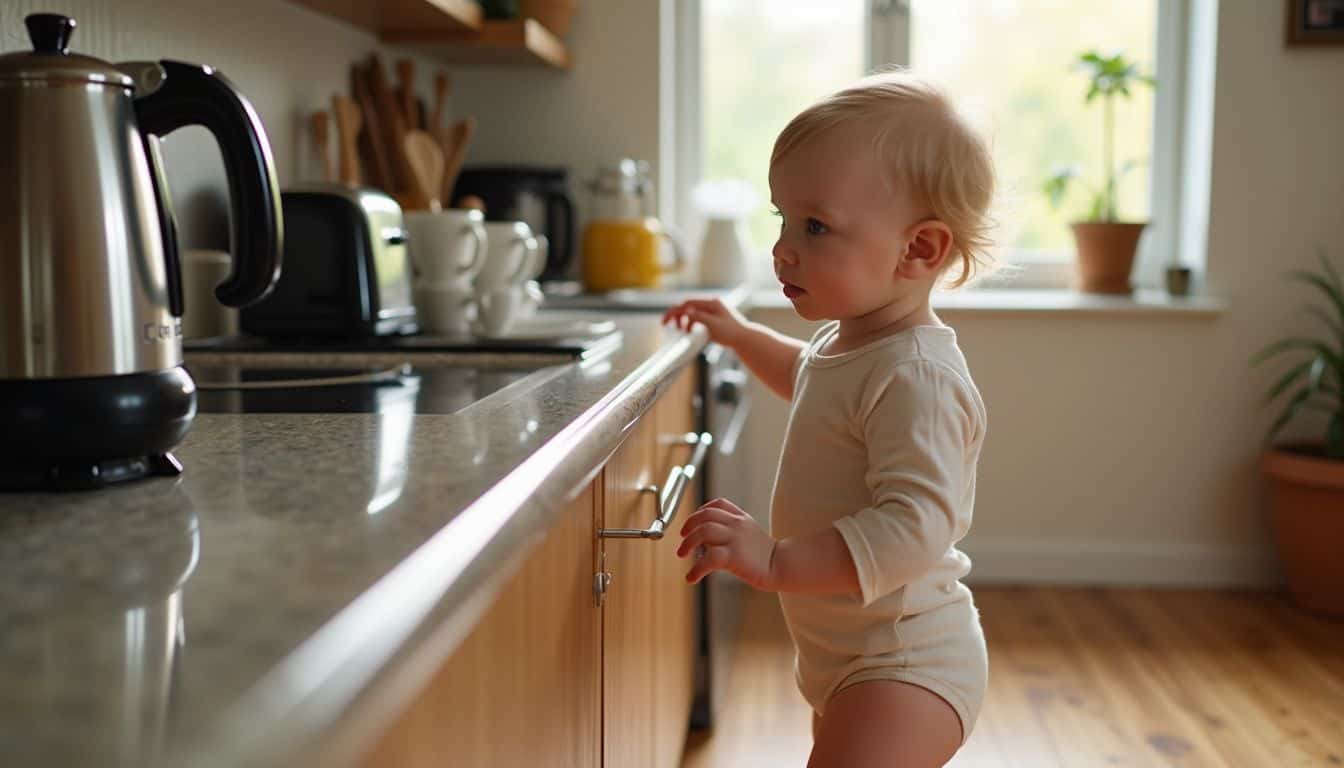
Burns from hot liquids and kitchen appliances are among the leading reasons kids get hurt at home. To keep curious hands safe, set up a kid-free zone about three feet around cooking spaces.
Move coffee machines, toasters, and slow cookers toward the back of countertops—or better yet, stash them away in cabinets after use. Hot drinks also pose special dangers; a simple cup of coffee can still cause severe scalds fifteen minutes after it’s brewed.
Make sure your home’s water heater is adjusted to a maximum of 120°F, since higher temps can quickly result in burns. Kitchen items like digital thermometers and food scales often contain small button batteries.
These batteries need to stay securely stored—kids can suffer serious internal burns if they swallow one.
Poison Prevention
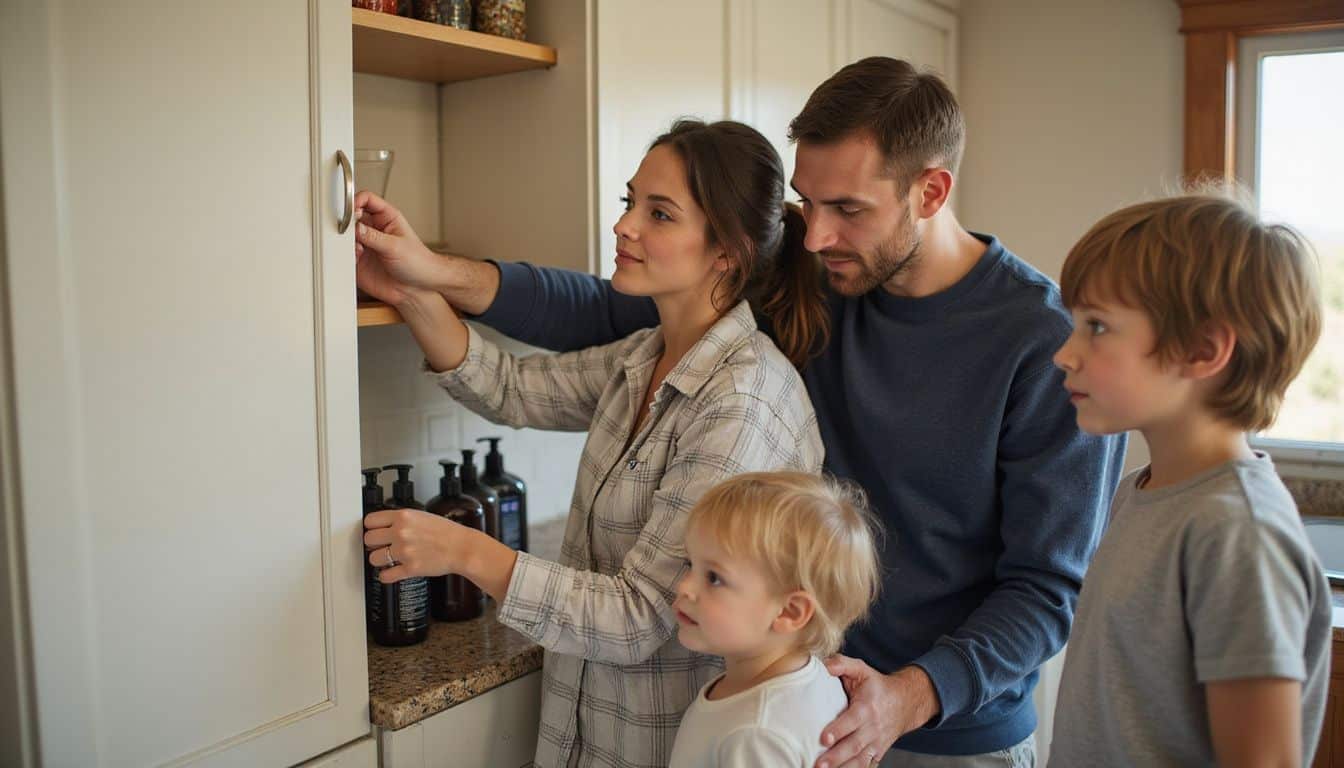
Kids can find harmful items in seconds, so keep all medicines and cleaning products locked away. Toxic plants and chemicals must stay out of reach to stop accidental poisoning that sends many children to emergency rooms each year.
Store medicines, cleaning supplies, and chemicals in locked cabinets
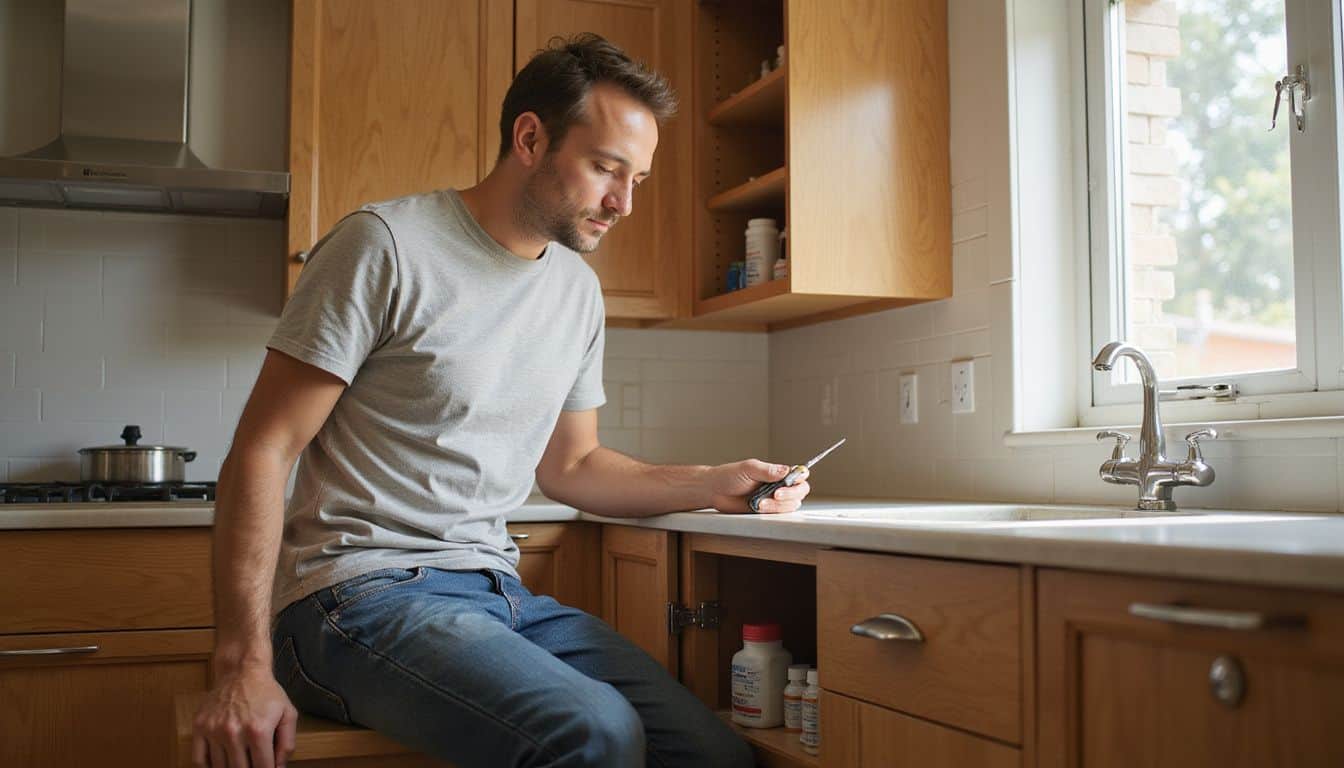
Little hands explore everywhere—they discover hidden dangers around your house. Locked cabinets help prevent accidental poisoning. Safety latches on cabinets holding cleaners or other chemicals keep harmful products away from young children.
Always store medicine in locked containers—even child-resistant caps aren’t completely secure. Many parents overlook marijuana edibles, which need the same protective storage as prescription medications.
Bathrooms and kitchen cleaning areas deserve extra attention, since many household items resemble candy or juice to young eyes.
Poison control centers receive daily calls about kids getting into household products. Keep your first aid kit handy for adults, but always out of a child’s reach. Carbon monoxide detectors offer an extra safety measure against invisible home dangers.
Water safety covers more than pools and bathtubs—even small amounts of standing water create risks for small children and can help keep homes safer for seniors too.
Avoid using toxic plants or materials in the home
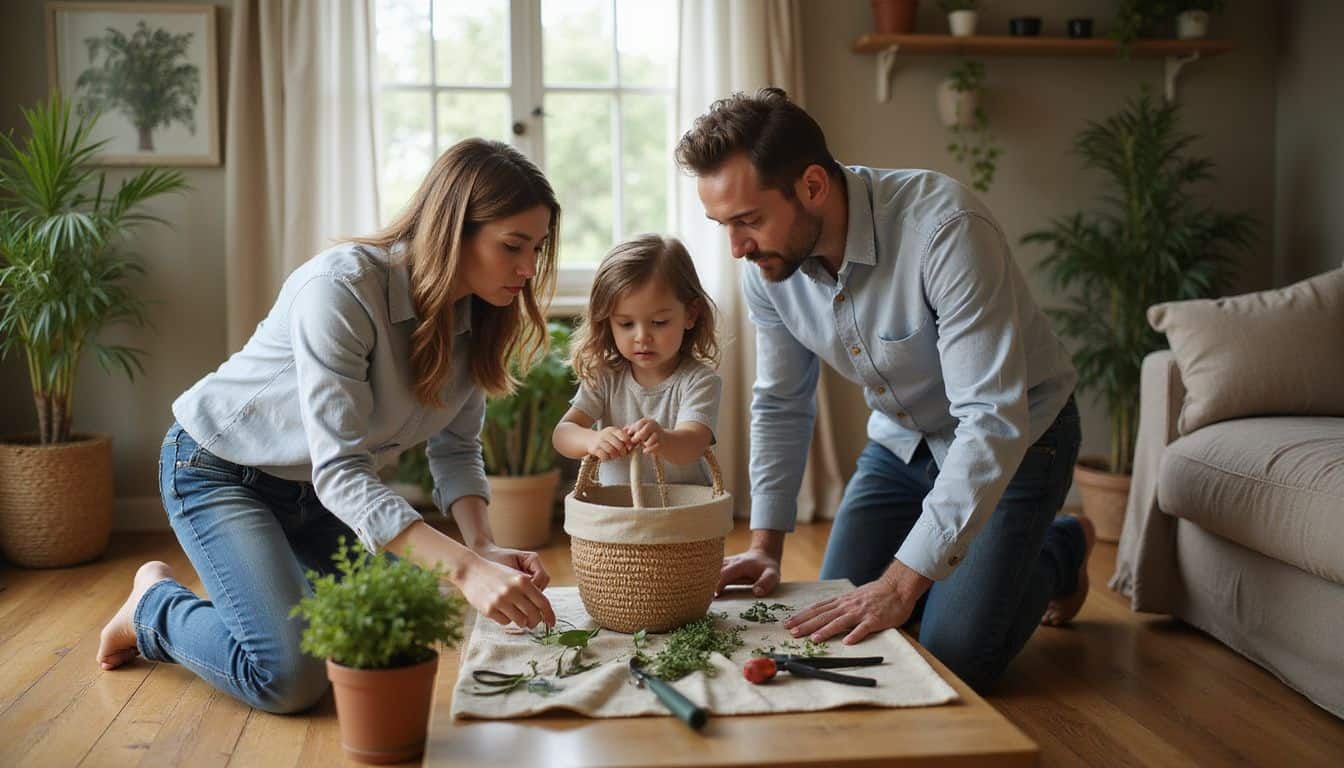
Lots of common houseplants look harmless—but can hurt curious children who touch or taste them. Before adding greenery, visit the National Capital Poison Center website; they offer a complete list of unsafe plants.
Attractive leaves and bright flowers sometimes hide hidden dangers that kids find tempting. Place dangerous plants out of reach, or better yet, remove them entirely.
Everyday household items carry risks too. For example, button batteries cause serious harm if swallowed. Keep these small, shiny batteries far away from young hands. Clean chemical spills immediately, and store all household cleaners in locked, high cabinets.
A child’s good health depends on a safe, poison-free home. Taking a few minutes to check your home today could save you a trip to the ER tomorrow.
Water Safety
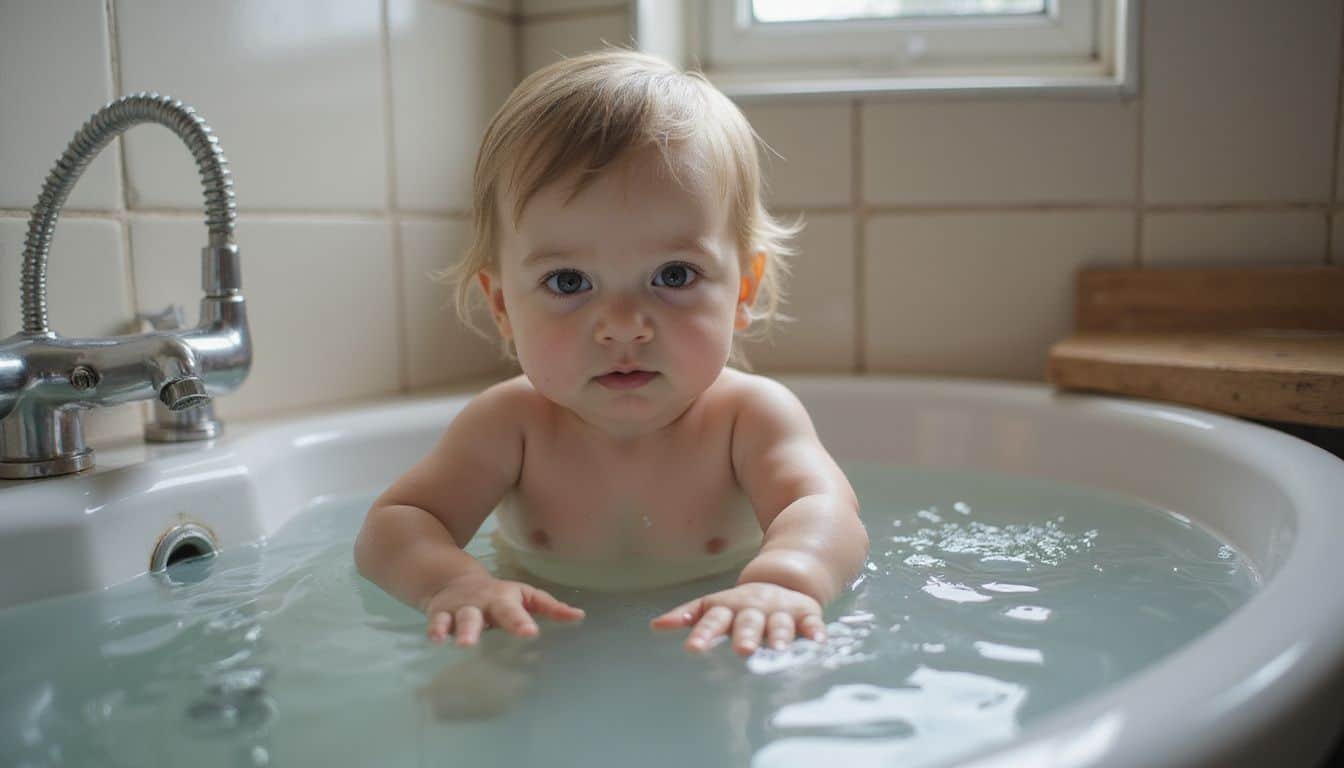
Water can pose serious risks to kids in many parts of your home. A child can drown in just two inches of water in bathtubs, toilets, or even buckets.
Supervise children around water
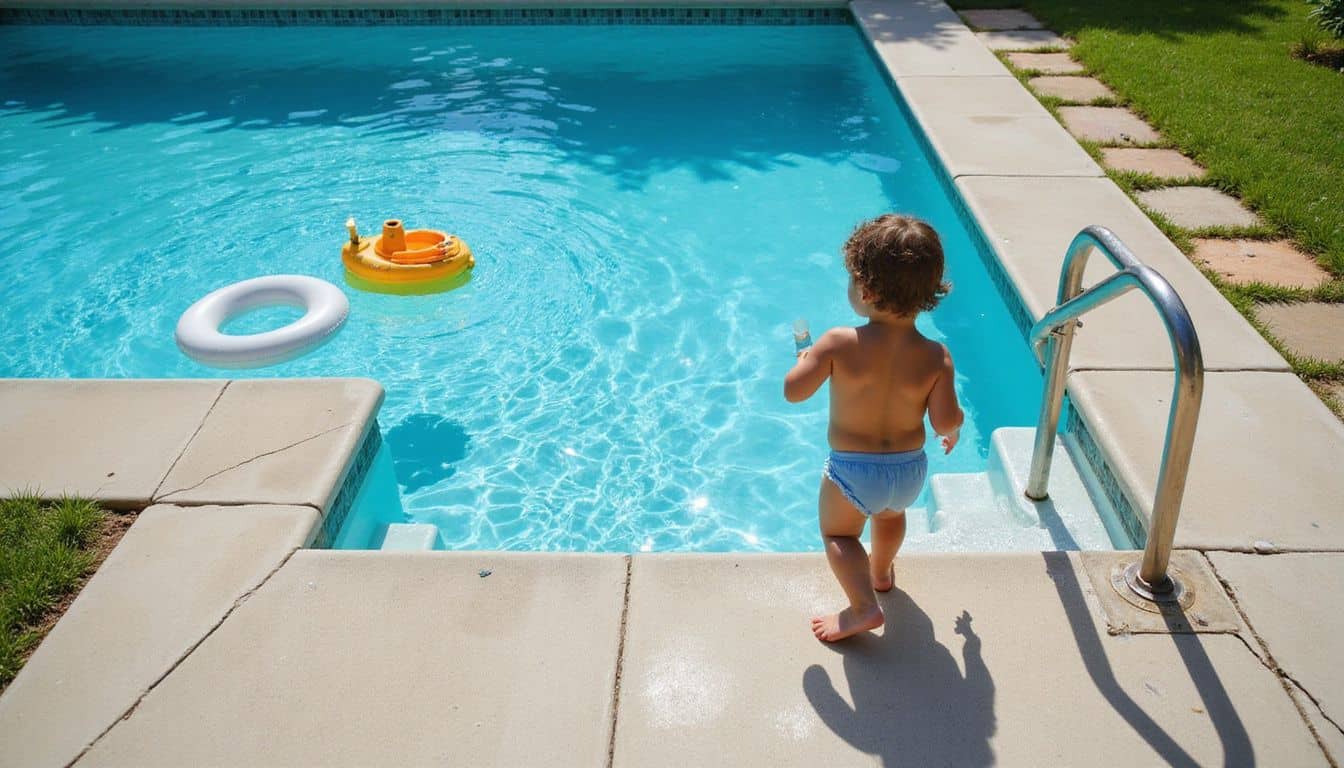
At home, water can become a real danger for kids. Always watch your child closely in baths, pools, or near any open water source. Empty the bathtub immediately after use—this step helps prevent accidents.
Most drownings involving children occur within minutes of lost focus. Your complete attention is essential for bathroom safety and keeping your child safe from injury.
A child can drown in less time than it takes to answer a phone call.
Teach your child swimming skills early—it could save their life someday. Around lakes, pools, or oceans, have them wear life jackets every single time. Explain clear rules too, like no running near pools and always swimming with a buddy.
Simple household rules like these build strong safety habits. Many pediatricians recommend starting swimming lessons by age four. It’s also smart to keep emergency contact numbers near pools or bathtubs, so you can quickly get help if something goes wrong.
Use safety locks on toilets and pool gates
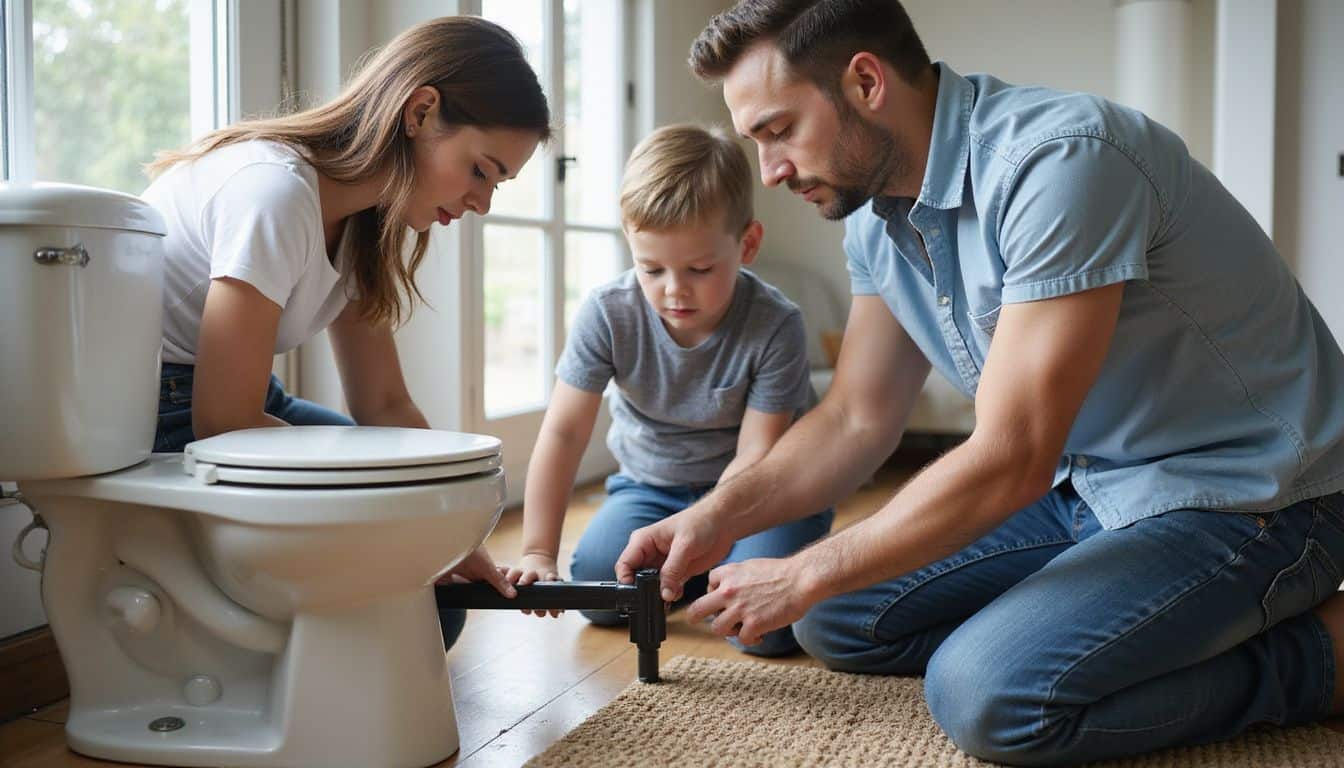
Keeping an eye on kids near water matters a lot, but extra safety steps make a big difference, too. A simple toilet seat lock stops toddlers from opening the lid and getting hurt. These little devices offer major protection—they help prevent children from accidentally drowning in toilets.
For even more security, always close toilet lids tightly after use.
Your pool needs strong barriers as well. A fence around all four sides of the pool, equipped with gates that close on their own, can lower accidental drowning risks by around 50 percent.
Check that the pool gate lock automatically clicks shut after someone enters or leaves. With this easy feature in place, small kids can’t wander near the water unless adults are around.
Most home safety specialists rate water barriers as one of the first steps parents should take to protect kids. Using toilet locks and fence gates together makes your home emergency planning safer and smarter.
Emergency Preparedness
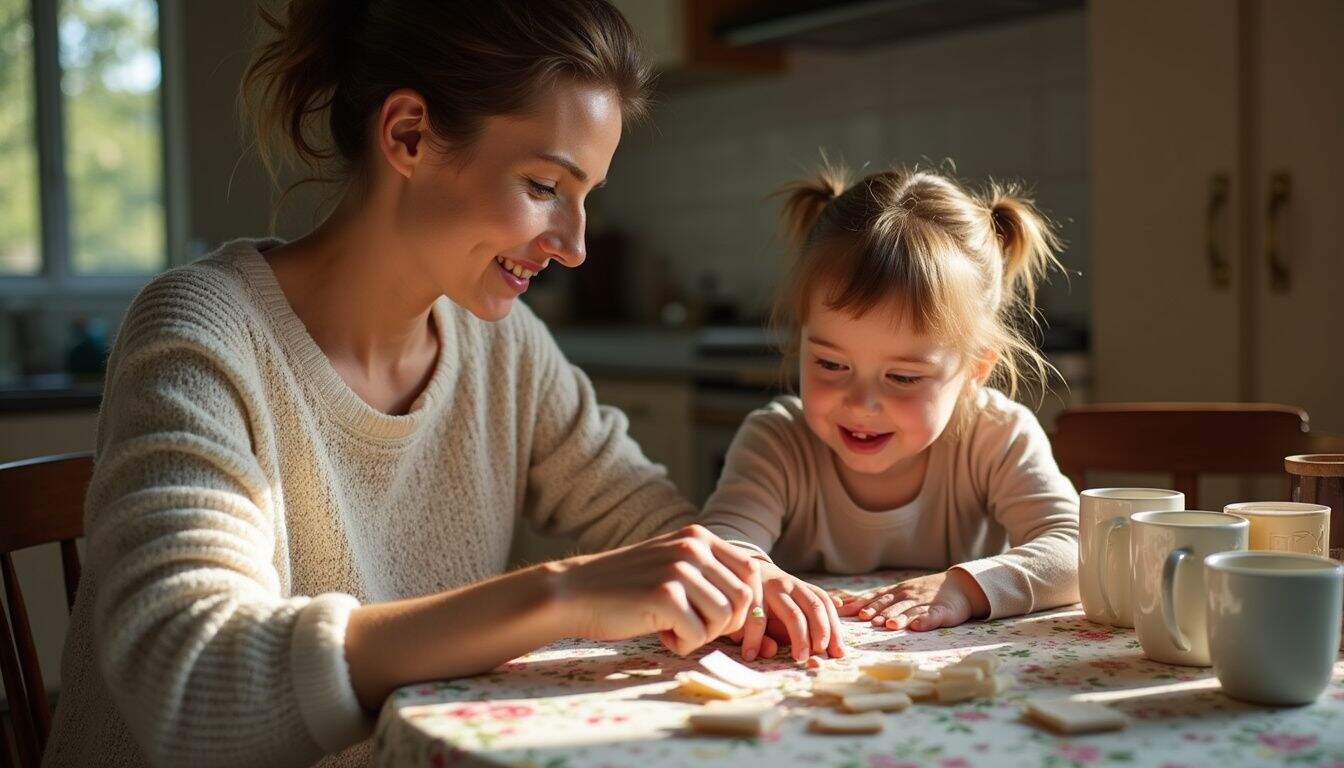
Being ready for emergencies helps keep your kids safe during scary situations. A well-stocked first aid kit and clear safety plans can make all the difference when seconds count.
Keep a first aid kit accessible
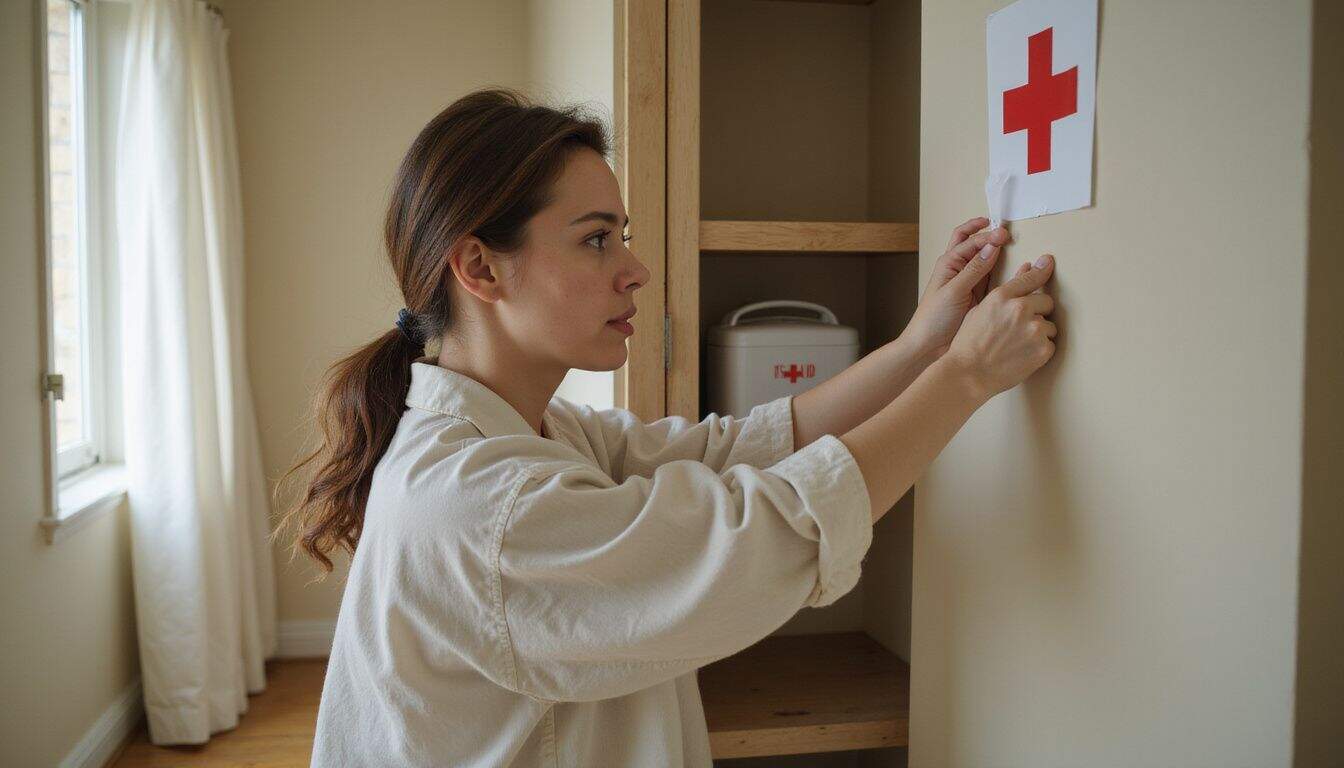
Your first aid kit needs a spot that’s easy for everyone to reach quickly. Pick a location your whole family knows well, such as a kitchen drawer or bathroom shelf. Our family keeps the kit on the middle shelf of the hallway closet, marking the door neatly with a bright red cross sticker.
Twice a year, go through your supplies—replace anything used and get rid of expired medications like acetaminophen or diphenhydramine. Pack useful basics like bandages, antiseptic wipes, and important emergency phone numbers.
Having first aid supplies ready speeds up your response during accidents. Show each family member basic first aid steps, using supplies right from your kit. Just last month, my daughter knew exactly where our kit was, and quickly took care of her brother’s scraped knee.
A fully stocked first aid kit lets you handle minor injuries before they get worse. It’s a practical way to prevent children’s injuries, putting moms’ minds at ease, especially during those sudden “uh-oh” moments.
Teach kids emergency numbers and basic safety practices
Kids must learn how to dial 911 during emergencies. Each month, I practice pretend calls with my children. They clearly state their names, our address, and what’s happening. Now, they recognize that a house fire, a severe injury, or someone who won’t wake up are valid reasons to call.
Every three months, our whole family goes over an emergency plan. We hold drills to practice gathering outside safely during a fire. Last week, my daughter proudly helped put together our first aid kit.
She knows exactly which items are gauze, antiseptic wipes, and bandages.
Smoke detectors and carbon monoxide alarms guard our home. The kids understand the different sounds these devices make, and they know exactly how to respond. Simple safety rules about hot water, electrical outlets, and choking risks have kept our home safe from many accidents.
How Will Child Safety at Home Evolve in 2025?
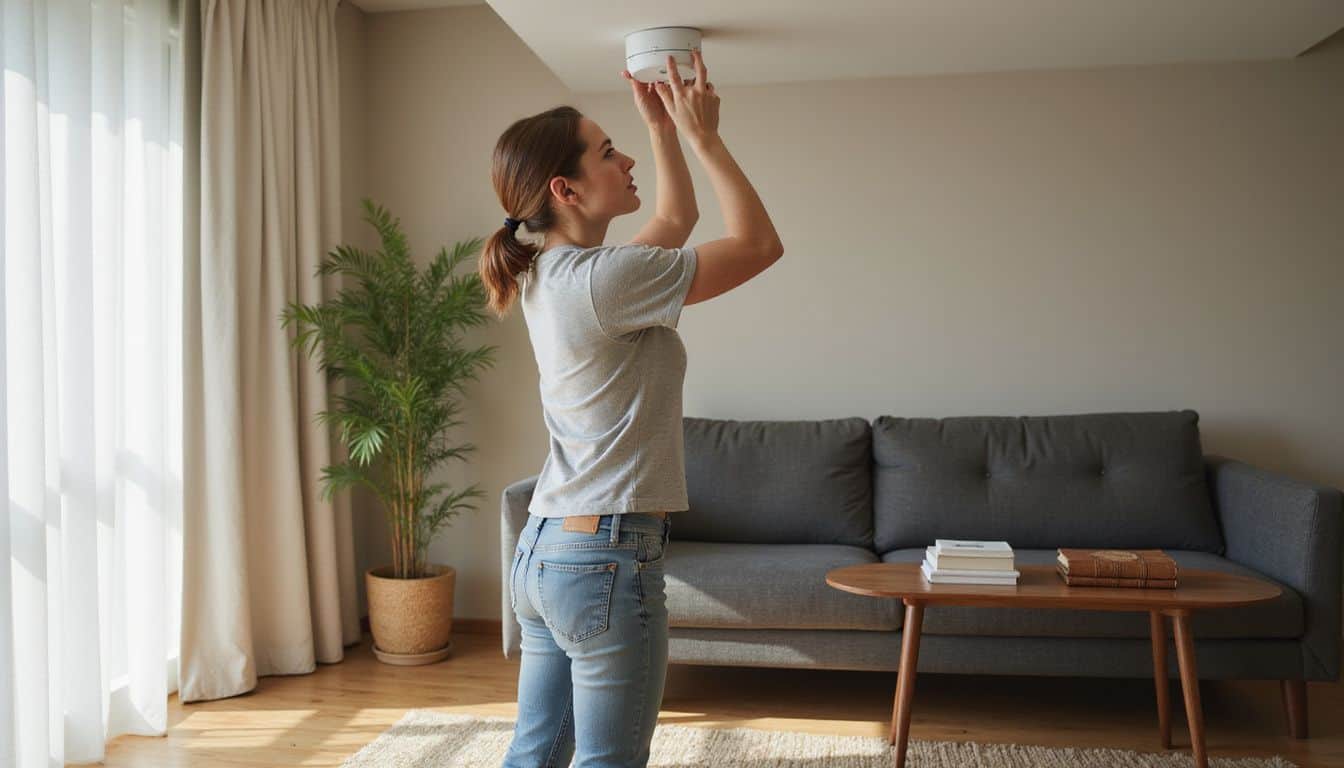
Home safety gear will look very different by 2025. Gun trigger locks will become common in households with kids. These tools prevent children from using firearms without adults nearby.
Smart smoke detectors will link directly to phones, alerting homeowners immediately about potential danger. Also coming soon—new child-safe packaging that makes it extremely difficult for little hands to open medicines and cleaning products.
Still, parents should store these items securely, in locked cabinets high above children’s reach. Fire safety will remain a priority. Families will improve emergency escape plans, placing extra carbon monoxide detectors on each home level.
New technology will offer fresh approaches for keeping children safe at home. Digital monitors won’t just track sound—they’ll pick up movements and breathing patterns too. Fingerprint-scanning locks will replace traditional key-based cabinet systems.
Families will swap harmful houseplants for safer, non-toxic varieties around the home. Open discussions about household hazards will become more common at family gatherings. Talking openly to children of all ages about home dangers helps them grasp why certain spots, like hot water heaters, require extra caution.
All these developments mean fewer childhood injuries across American homes.
People Also Ask
What are the most common choking hazards for kids at home?
Kids often choke on small toys, coins, buttons, and certain houseplants. Keep an eye out for tiny objects lying on floors and shelves. Always store utensils and small items away from children’s reach, just to stay safe.
How can I prevent burns and scalds in the kitchen?
Turn pot handles inward while cooking, and use back burners whenever you can. Keep hot drinks away from kids—little hands can grab quickly, leading to nasty burns.
What’s the best way to store medications safely?
Medication like Advil or Albuterol always belongs inside childproof containers. Place medicine bottles up high, hidden inside cabinets—not on countertops, tables, or in purses—to protect curious children from accidental ingestion.
How important are carbon monoxide alarms in preventing child injury?
Carbon monoxide alarms are extremely important at protecting kids. CO poisoning has no smell or sound, making it scary and dangerous—install alarms near sleeping areas, and check batteries at least twice a year.
What furniture items need to be secured to prevent tipping accidents?
Always anchor tall furniture like dressers, bookshelves, and TVs securely to the wall. Choose cordless window blinds to avoid strangulation risks, and double-check cribs and mattresses to make sure everything’s properly in place.
References
https://onelittleproject.com/babyproofing-how-to-install-safety-latches-on-cupboards/
https://staysafe.org/family-safety/childproofing-electrical-outlets-and-cords/
https://libbykirwin.com/blog/how-to-make-sure-your-home-is-safe-for-children
https://yourkidsurgentcare.com/effective-accident-proof-bathroom-tips/ (2021-05-27)
https://www.senderspediatrics.com/Keep-Your-Family-Safe-Fire-Safety-and-Burn-Prevent
https://www.safekids.org/tip/burns-and-scalds-prevention-tips
https://kidshealth.org/en/parents/safety-poisoning.html
https://thestonegateresort.com/2024/06/keeping-kids-safe-in-the-water-essential-tips-for-parents/
https://www.connecticutchildrens.org/growing-healthy/6-must-know-water-safety-tips-parents
https://www.safekids.org/content/water-safety-little-kids
https://newbedfordems.org/keeping-your-family-safe-creating-a-home-first-aid-kit/
https://raleighnc.gov/safety/services/ready-raleigh-guide-emergency-preparedness/preparing-children-emergencies (2025-01-17)
https://www.fmins.com/blog/teach-children-about-emergency-preparedness/
